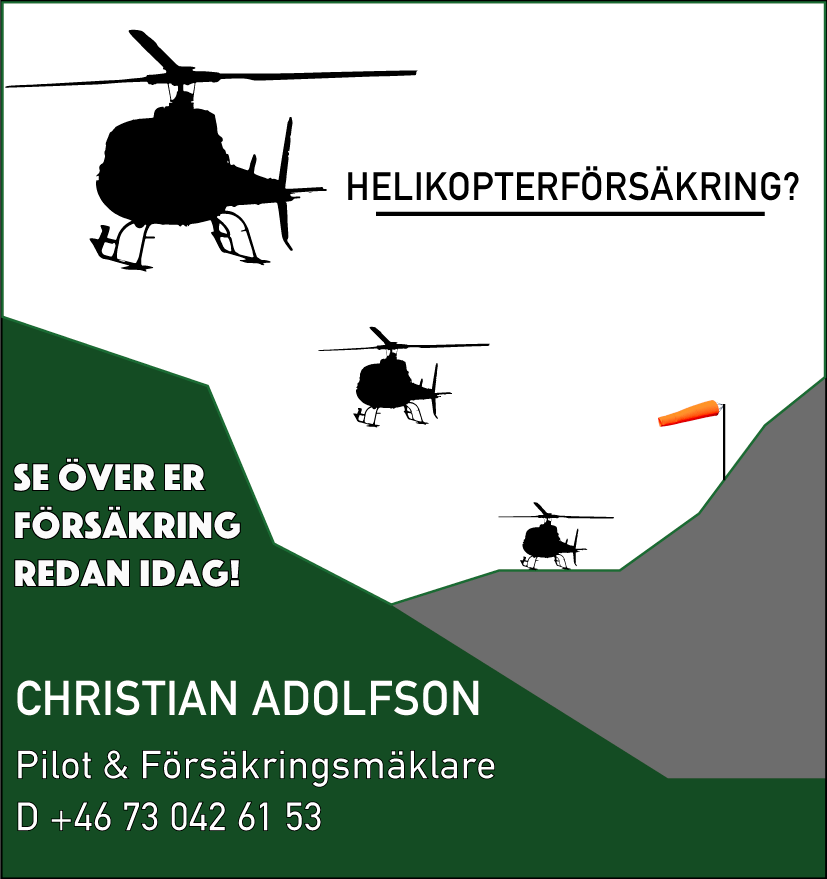SE-HOT
Information
Manufactured year
1968
Call sign
-
Serial number
8094
Registration history
SE-HOT
(? - Now)
LN-OQA
(? - Now)
SE-HEP
(? - Now)
G-AWOY
(? - Now)
Type history
Agusta Bell 206B Jet Ranger II
Operator history
East Wing A/S
(? - Now)
Ostermans Aero AB
(? - Now)
Unknown
(? - Now)
Information
This aircraft was constructed by Costruzioni Aeronautiche Giovanni Agusta SpA in Italy back in 1968. It was operated as an A model in the UK, where it changed owner three times. Autair International Ltd had the helicopter from 1971, until it was damaged in an accident a few years later. The airframe was purchased by Ostermans Aero AB in January 1974 and it was eventually repaired and upgraded to a B (II) model.The helicopter got the Swedish registration SE-HEP in May 1974. It was sold to A/S Lufttransport in May 1976, registered LN-OQA. The Jet Ranger was operated by Heli-Scan A/S from 1986.
LN-OQA returned to Ostermans Aero in Sweden in late 1988. It got the registration SE-HOT in January 1989. SE-HOT was leased to the Norwegian operator East Wing A/S in the autumn of 1989, starting in August. The company operated a couple of Swedish registered machines between 89-90, after which they decided to focus in fixed wing airplanes.
Fatal Accident
On 11 October two people lost their lives when SE-HOT collided with the inclined terrain at Finnmarksvidda in northern Norway. The 6400-hour helicopter was engaged in air transportation assignments associated to a reindeer herding operation south of Alta. The pilot and his passenger were headed for Badajav'ri from Masi when the helicopter hit the ground at high speed at Nubezanoaivvi (600m AMSL), killing the two occupants immediately.
The Norwegian Accident Investigation Board found that the accident was caused by the fact that the helicopter was operated in darkness and poor visual references, which disoriented the pilot and caused the helicopter to collide with the terrain. The Board said that the fact that the company relied in an inexperienced pilot to run the daily operations in remote areas and harsh conditions, far away from the company's main base in Oslo, might have contributed to the pilot's decision to make a commercial flight in darkness, which contravened the present regulations.
